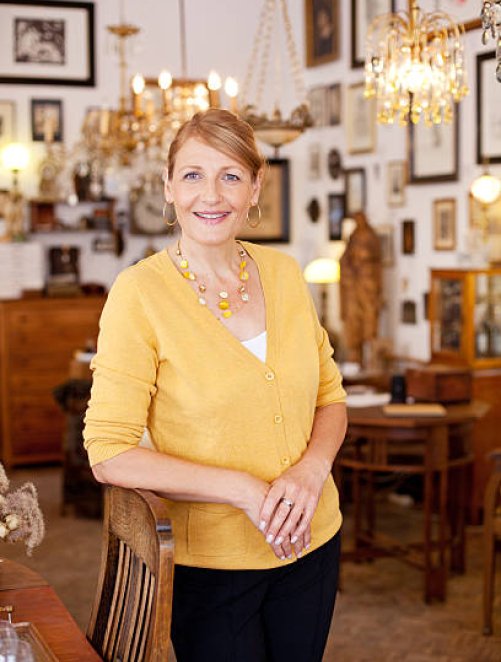



3 inch stone figurine thought to be early American?
small rock, stone carving of a doll thought to be early American? Found in Eastern Oklahoma Circa 1950. One leg chipped off. In the photograph it is wrapped in plastic (my mother did this as she thought would preserve it). Material: It appears to be terracotta or a similar unglazed ceramic. Size: Approximately 3 inches (judging by the ruler). Design: It looks like a figure reclining or possibly wrapped—could be Mesoamerican, Pre-Columbian, or folk art style. Coloration: The reddish tone and carving style are consistent with indigenous or early colonial artifacts from the American Southwest, Mexico, or Central America—not classic early American colonial furniture or tools.
3 inches
Inherited
Yes


American Indian Two-Part Mold Figurine
Found in Oklahoma, United States
Possible manufacture in: UK, Spain, or North America
Possible make years: 1880s to 1940s
Approx. measurements: 3" height; 14grams weight
Figurine is constructed from a two part mold-making process, front and back. Object appears to be terracotta clay greenware with a wax/oil glaze. The glaze could be fired-on or this could be oil accumulated from handling and exposure. Use as children's toy or decorative item.
I believe this is a more recently constructed statue, from perhaps the 1880s to the 1940s. I have two main reasons for this time frame assignment. 1. The form and facial details follow standard Western ideas of emphasized realism in the construction. Looking at examples of images of Mayan mold-made figurines and figurines made by many European and early American toy companies in the 1880s to the 1930s. I can see differences in the construction and shape of nose and eye formation from the two different cultures. From images, it appears that this figurine has western features. 2. The figurine, from images, also appears to have no torso anatomy presented. Early mesoamerican figurines often do. This makes me believe the item was created for a Western market where a christian representation of modesty would be practiced.
FMV price assessment is broad and encompasses the possibility that the figurine IS south American in origin (albeit later date 1700-1900s and after European influence). What an interesting piece. You could continue to research the item with a regional anthropology university department or natural history museum.
*Note on plastic removal*
There is no immediate rush to do so, but the plastic can capture moisture.
I suggest a professional conservator remove the plastic (cost would be $200+)
At home, one could (nimble fingers needed):
-Have acid-free paper ready to place the figurine on.
-A polishing cloth, cotton t-shirt, or other soft, but not plush, material to set the figurine on while removing the plastic
-No heat, no moisture
-Use small tools to remove the plastic, ie sewing-kit tools like a thread and needle to break away at the lose areas of the plastic.
-With dry, product free, fingers; gently move figurine onto the tissue housing for storage.
Future reading resource:
https://primo.getty.edu/primo-explore/fulldisplay/GETTY_ALMA21224338830001551/GRI
Mass production in ancient Mesoamerica - Maya Mold Made presents a collection of 208 ancient clay figurine molds from the late Maya Classic period (ca. AD 730-830), once employed in the mass-manufacture of musical figurines for ceremonial use, now in the collection of the Ruta Maya Foundation in Guatemala.More than a descriptive record of significant rare artifacts, the book exhibits an unexamined chapter of Classic Maya life, and brings it to life with realistic virtual restorations of now-lost mold-made objects in images uniquely created by digital photo-capture of a compelling high-relief optical effect known as the hollow-face or hollow-mask illusion, with no harm done to the molds. The result reveals never-before-seen examples of a popular Maya art that allows us today to feel a direct human connection with the remarkable people that made them more than a millennium ago - small ceramic figures, sometimes called "Jaina" figurines, that depict many aspects of daily life in that ancient time, both royal and mundane.Archaeological evidence shows they played a role in the ritual practices of all levels of Maya society. How was this demand met and how could such engaging art be made affordable to the common people as well as the royal elite? The molds in this collection provide an answer: economy of scale. They were mass-produced, manufactured in vast numbers.In 448 pages richly illustrated with over 800 color photos and illustrations, the book describes the development, technology, and societal role of the ancient Maya's figurine industry. The iconographic analysis of objects in its catalog core is supported further in appendices of supplementary text and photo references. It is one of only a few books in ancient popular Maya art and its industrial production. Created for all enthusiasts of Maya art and culture, from students to scholars.
Previous:
"Thank you for your submission. The figurine is very interesting. The form and facial details remind me of 1920-1930 lead figurine toys made by several UK companies of that time. However, I also wonder if it is a small, Spanish style clay statue used to place at christian catholic religious altars or decorate worship spaces.
Please, can you provide a weight of the item. And, also, if you have the time: several more images of the back, sides, and lower loss area.
On storage:
No matter what material your statue is made from, I suggest removing the figure from the plastic wrap. You can purchase a small amount of acid free tissue to wrap and store you example in a small box from an artist supply or jewelry store. Read more on terracotta here: https://fineart-restoration.co.uk/news/baked-earth-terracotta-care-and-professional-restoration/ "










Good morning! It is hard to see details on the back, my mother wrapped it in the plastic years ago for preservation. I will work on getting that un wrapped and put in the acid free paper you advised..any guidance on how to do it delicately? It weighs 14 grams.